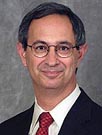

President’s Page
Planning for a Changing World
By Joel Seligman
 Few projects are more important to a university than strategic planning. Strategic
plans give a university and its academic components the opportunity to articulate
priorities and address the means of achieving them. Effective strategic planning
takes time because it is essential to involve all relevant constituencies in
the process.
Few projects are more important to a university than strategic planning. Strategic
plans give a university and its academic components the opportunity to articulate
priorities and address the means of achieving them. Effective strategic planning
takes time because it is essential to involve all relevant constituencies in
the process.
During the next two years, the University, each school, and the Medical Center will undertake a strategic planning effort—drafting, reviewing, and ultimately adopting plans for each unit and for the University as a whole.
Our nation is in the midst of a profound economic transformation. Domestic manufacturing has declined sharply, from 20.7 percent of the workforce in 1980 to 11.7 percent in 2002. This has created painful challenges for many regions, including Monroe County, where manufacturing employment has dropped from 133,800 to 76,400 in just 10 years, from 1995 to 2005.
Simultaneously, however, a knowledge-based economy is rapidly expanding. Federal agencies predict that 90 percent of the jobs in the knowledge economy will require some postsecondary education; that there will be 2 million new jobs in engineering, computer science, mathematics, and the physical sciences in the next eight years; and that 16 of the 30 fastest growing jobs in the next decade will be in the health professions, including physicians, nurses, and other medical professionals who will be needed to address the health concerns of an aging population.
“The question before us is how to build on our traditional strengths to meet the challenges of a rapidly changing world.”
The University is unusually well positioned to respond to this transformation. We are committed to the very fields at the heart of future need and growth, including medicine (as well as dentistry and nursing), engineering, mathematics, computer sciences, and the natural sciences.
Demographic changes also favor the University. The first 15 years of this century are predicted to see the largest university enrollment growth in our nation’s history, adding 2 million additional undergraduates. This growth presents a special opportunity to increase enrollment while simultaneously increasing student quality.
A review of these challenges underlines the need for strategic planning. In preparation for our own process, I have been reviewing the plans of similar institutions. One theme is consistent throughout: We live in an age of academic interdisciplinarity. Our leading peers are rapidly shifting from a model that simultaneously emphasizes the disciplinary grounding provided in existing departments and schools toward a hybrid model which continues traditional departments and schools while creating new institutes, schools, and programs that involve two or more academic disciplines.
Faculty often praise the culture of collaboration at the University. Interdisciplinary work has been a strength. One needs to look no further than the study of optics or medicine. The new Goergen Center for biomedical engineering and optics is an outstanding example. We are fortunate that the River and Medical Center campuses are contiguous.
Physical proximity tends to facilitate collaborative work. Our modest resources and faculty size have also tended to inspire interdisciplinarity. The faculty have often made a virtue of necessity in joint appointments, core facilities, research, and curricular design. The question before us now is how to build on our traditional strengths to meet the challenges of a rapidly changing world. We are beginning a thoughtful, inclusive, consultative planning process that will involve the entire University community.
